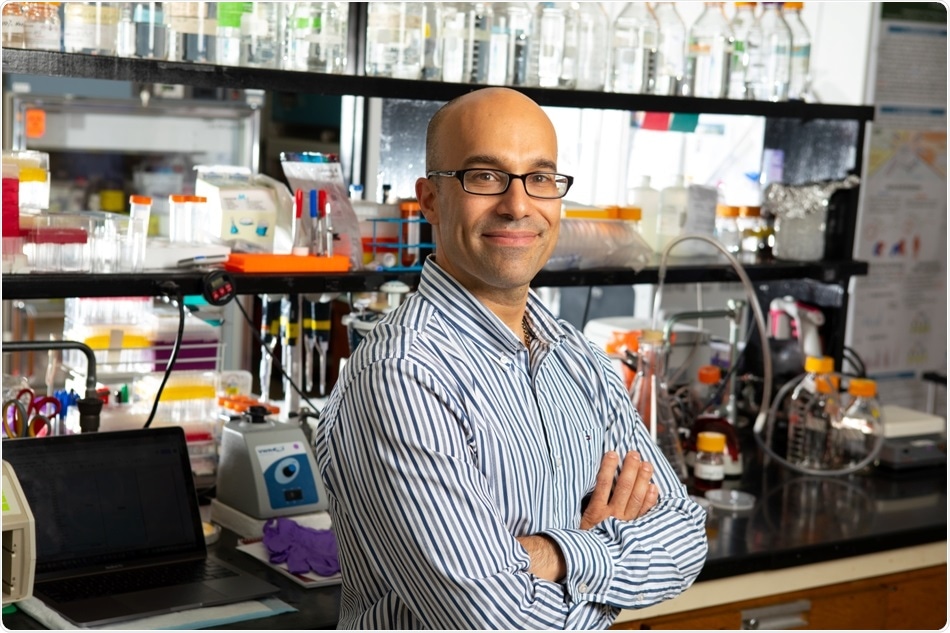In the recent past, researchers have gathered evidence that Neanderthals and modern humans share a complicated past. In the history of human evolution, both these species interbred not just once but several times.

Omer Gokcumen, evolutionary biologist and associate professor of biological sciences. Image Credit: University at Buffalo.
A recent study supports this concept by establishing that people who live in Eurasia at present have genetic material connected to Neanderthals from the Altai mountains in modern-day Siberia.
This finding is crucial as earlier studies have demonstrated that Neanderthals linked to a different, faraway location—the Vindija Cave in modern-day Croatia—share their DNA with modern-day Eurasian populations.
The findings reiterate the theory that Neanderthal DNA has been interwoven into the modern human genome on several occasions since ancestors met Neanderthals time and again in various parts of the world. The study was published in the Genetics journal on March 31st, 2020.
It’s not a single introgression of genetic material from Neanderthals. It’s just this spider web of interactions that happen over and over again, where different ancient hominins are interacting with each other, and our paper is adding to this picture. This project will now add to an emerging chorus—we’ve been looking into this phenomenon for a couple of years, and there are a couple of papers that came out recently that deal with similar concepts.”
Omer Gokcumen, Lead Researcher and Associate Professor, University at Buffalo
Gokcumen added, “The picture in my mind now is we have all these archaic hominin populations in Europe, in Asia, in Siberia, in Africa. For one reason or another, the ancestors of modern humans in Africa start expanding in population, and as they expand their range, they meet with these other hominins and absorb their DNA, if you will. We probably met different Neanderthal populations at different times in our expansion into other parts of the globe.”
Gokcumen—Associate Professor of biological sciences in the UB College of Arts and Sciences—headed the study along with first author Recep Ozgur Taskent, a recent UB Ph.D. graduate in the department.
Co-authors of the study are Yen Lung Lin, a UB Ph.D. graduate who is now a postdoctoral scholar at the University of Chicago; and Ioannis Patramanis and Pavlos Pavlidis, Ph.D., of the Foundation for Research and Technology in Greece. The research was financially supported by the U.S. National Science Foundation.
The researchers conducted an analysis of the DNA of hundreds of people of Eurasian ancestry to finish the project. Their aim was to search for the fragments of genetic material that could have been inherited from Neanderthals.
This study discovered that the Eurasian populations investigated could share some genetic material with two different Neanderthal lineages: one represented by a Neanderthal whose remains were found in the Vindija cave in Croatia, and the other represented by a Neanderthal whose remains were found in the Altai mountains in Russia.
Scientists also unraveled that the modern-day populations investigated also shared genetic deletions—the missing areas of DNA—with both the Altai and Vindija Neanderthal lineages.
The DNA of the Altai and Vindija Neanderthals, together with the modern human populations investigated, was also sequenced earlier by various research groups.
It seems like the story of human evolution is not so much like at tree with branches that just grow in different directions. It turns out that the branches have all these connections between them. We are figuring out these connections, which is really exciting.”
Omer Gokcumen, Lead Researcher, Associate Professor, University of Buffalo
Gokcumen added, “The story is not as neat as it was before. Every single ancient genome that is sequenced seems to create a completely new perspective in our understanding of human evolution, and every new genome that’s sequenced in the future may completely change the story again.”
Source:
Journal reference:
Taskent, O., et al. (2020) Analysis of Haplotypic Variation and Deletion Polymorphisms Point to Multiple Archaic Introgression Events, Including from Altai Neanderthal Lineage. Genetics. doi.org/10.1534/genetics.120.303167.